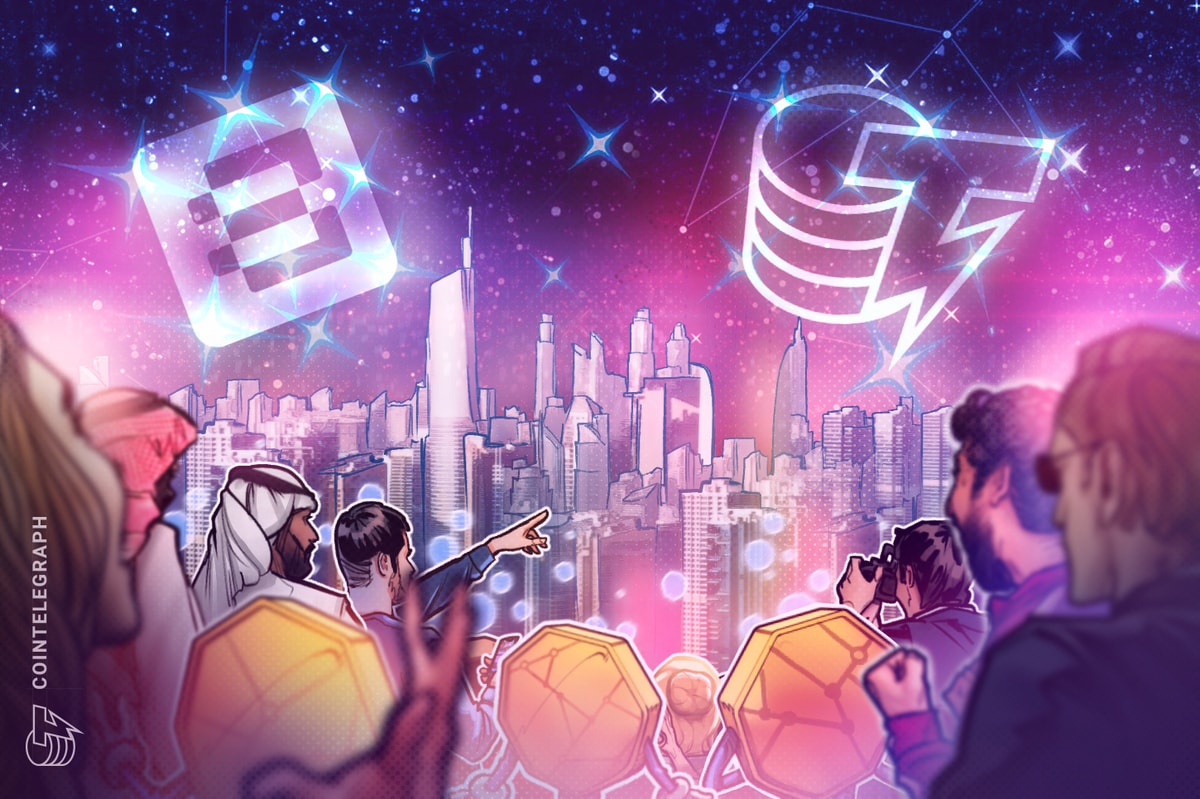The Metaverse is very much not dead, but while debunking random hit-and-run diatribes to that effect, I’m in the weird position of also wondering how (or even if) the 600 million+ active users across various metaverse platforms can (or should) somehow be seamlessly unified.
Which paradoxically, means debating the approach taken by Metaverse-as-service-Startup Lamin1, co-founded by literal Neal Stephenson.
Last week Lamina1 published a massive white paper on the topic, leading me to debate the value of walled gardens with CPO Tony Parisi.
This week, let’s focus on its approach to interoperability based on the blockchain:
Specialized metachains allow for the creation of blockchain-based applications and experiences in ways that overcome the limitations of today’s monolithic chains. Additionally, they allow for a much wider variety of businesses and use cases than today’s metaverse “walled gardens,” empowering the users and the market –– rather than a centralized, risk-averse entity focused on specific business models –– to decide on the value of things that get made.
We also believe that the future metaverse also has to combine the best of immersive computing tech with the best of blockchain to ensure commercial success, longevity, transparency, and privacy online. On-chain rights management, distributed simulation, and storage services would help get us there, in a way that’s accessible to all creators, not just a small club controlled by the few.
OK, but wait: Won’t blockchains hurt consumer performance, since they tend to be much more time-consuming to query than a centralized database? In a real time experience, even several seconds of additional wait time can be a deal breaker.
Will Carter, CTO of LAMINA1 and co-author of the white paper, argues not so, but also has some thoughtful qualifiers:
“Yes, blockchains are generally much slower than a centralized database for operations that modify state, though read operations can be quite fast depending on the situation. However, our goal is not and probably should not be to build everything on a blockchain.
“The massively multiplayer online gaming space has struggled with scale and performance issues since its inception. It’s hard to build a fast-paced compelling experience while getting world and player state data from a remote server with latencies that are orders of magnitude higher than if it was done locally. But the juice is worth the squeeze, the social component that an MMO experience offers is worth the cost to developers and users so we architect clever ways to get around the performance issues.
“The transparency, interoperability, ownership, and economic functionalities that blockchain technology brings to the table is fundamental for an open and interoperable metaverse that uniquely empowers creators and users, so it is likewise worth the challenge of developing against it. The key is figuring out which components of these immersive experiences benefit from decentralized characteristics (say avatars, items, currency, and similar creator content) and develop those on-chain while allowing for traditional centralized infrastructure to carry the heavy lift of the rest of the experience.”
That to one side, I pointed out that Decentraland, Axie Infinity, and literally every other blockchain-based game and metaverse platform have failed to gain mass user adoption.
Tony Parisi’s take on that:
“Play to Earn games like Axie Infinity and open Metaverse systems like Decentraland are pretty different; though in my opinion, these two examples do have something in common: they have failed to gain traction because they aren’t compelling enough. It has nothing to do with them being based on blockchain — or any other technology choice that may have been made.
“The common element is there’s not enough interesting stuff to do, or at least enough to keep people coming back.
“Now let’s unpack these two very different cases. To me, the idea of Play to Earn is fundamentally flawed. You play a game to have fun, to unlock achievements, to get on leaderboards, to be part of a culture. The only way virtual economies spring up around paying to reach goals like that is for the games to be inherently entertaining. World of Warcraft is the most obvious and visible example here — entire markets have emerged around characters and items, because they have inherent value within the play of the game. First and foremost: you need to make the game worth playing; then some amount of the audience will pay to get rare items.
“When it comes to web3 virtual worlds like Decentraland, there is a different dynamic happening. They’re just not that much fun right now. They are about on par, feature-wise, with very early versions of Second Life (circa early 2000’s) – and it seems to me like folks are repeating all the same mistakes that have been made decade after decade with building things like this:
“It’s a clunky user experience and there’s not enough to do. Given enough time, I think web3-based worlds like Decentraland are going to succeed. They just have to hit on some formula of a good tool set and enough fun things to do. And once again let me say, to me this has nothing to do with tech and everything to do with experience.
“LAMINA1’s CEO Rebecca Barkin puts it perfectly, ‘You can’t architect a compelling experience backward from a desired financial outcome.'”
That last point is exactly right, and I agree with Tony about the need to be fun first and foremost. I would probably quibble with the early Second Life comparison, as it started gaining steady user traction in 2004. But that was as much about its powerful user-creation tools (for the time) as it was about the “make real money in the virtual world” appeal.
Thanks to Taleen Simonian for her help corralling this conversation!
Read More: nwn.blogs.com








 Bitcoin
Bitcoin  Ethereum
Ethereum  Tether
Tether  XRP
XRP  Solana
Solana  USDC
USDC  Dogecoin
Dogecoin  Cardano
Cardano  TRON
TRON  Lido Staked Ether
Lido Staked Ether  Sui
Sui  Wrapped Bitcoin
Wrapped Bitcoin  Chainlink
Chainlink  Wrapped stETH
Wrapped stETH  Avalanche
Avalanche  Stellar
Stellar  Shiba Inu
Shiba Inu  Hedera
Hedera  Hyperliquid
Hyperliquid  Toncoin
Toncoin  Bitcoin Cash
Bitcoin Cash  Pi Network
Pi Network  LEO Token
LEO Token  Litecoin
Litecoin  Polkadot
Polkadot  WETH
WETH  USDS
USDS  Monero
Monero  Wrapped eETH
Wrapped eETH  Pepe
Pepe  Bitget Token
Bitget Token  Binance Bridged USDT (BNB Smart Chain)
Binance Bridged USDT (BNB Smart Chain)  Ethena USDe
Ethena USDe  Coinbase Wrapped BTC
Coinbase Wrapped BTC  WhiteBIT Coin
WhiteBIT Coin  Uniswap
Uniswap  Bittensor
Bittensor  NEAR Protocol
NEAR Protocol  Aptos
Aptos  Dai
Dai  Aave
Aave  OKB
OKB  Ondo
Ondo  Ethereum Classic
Ethereum Classic  Internet Computer
Internet Computer  BlackRock USD Institutional Digital Liquidity Fund
BlackRock USD Institutional Digital Liquidity Fund  Cronos
Cronos  Tokenize Xchange
Tokenize Xchange